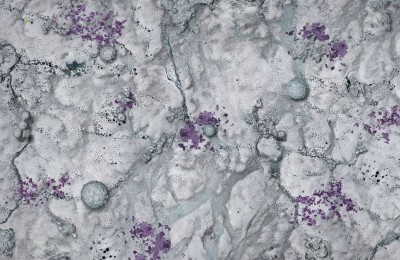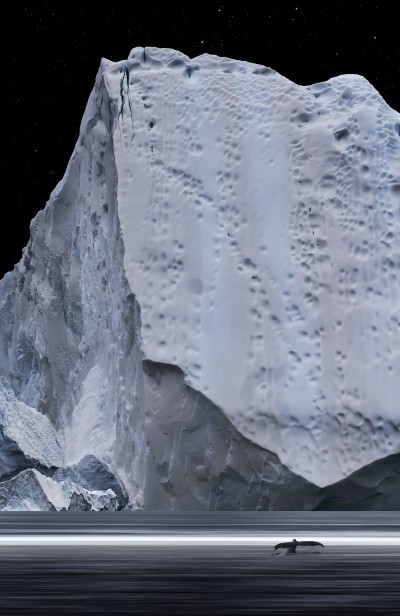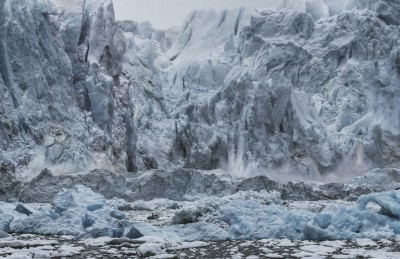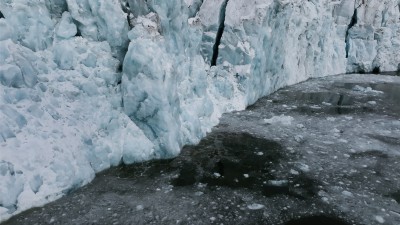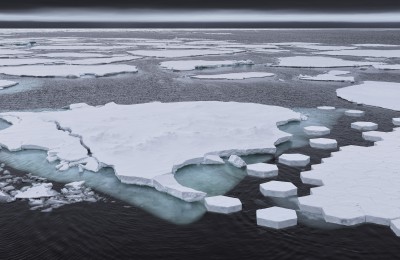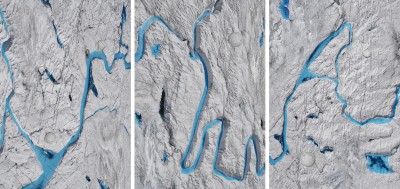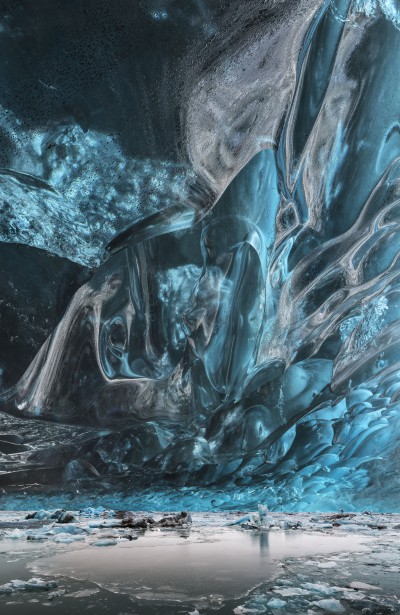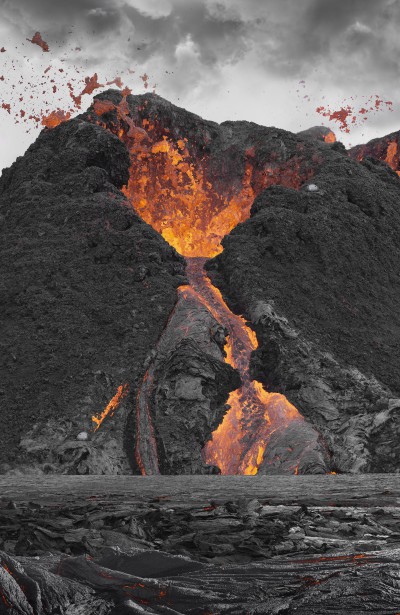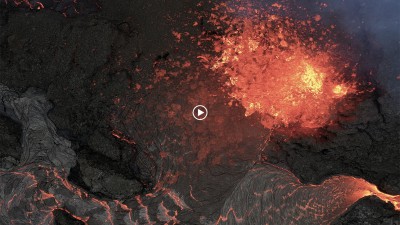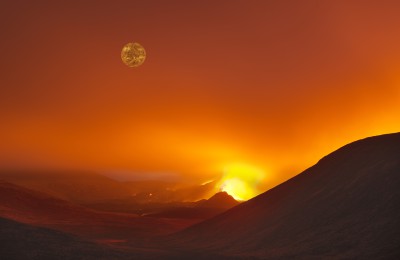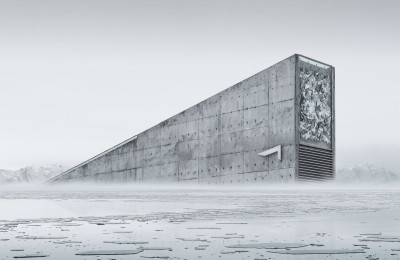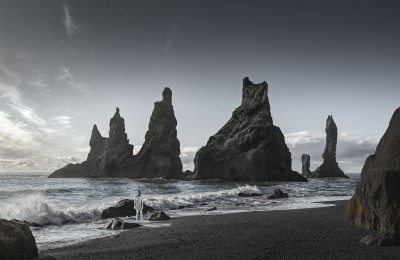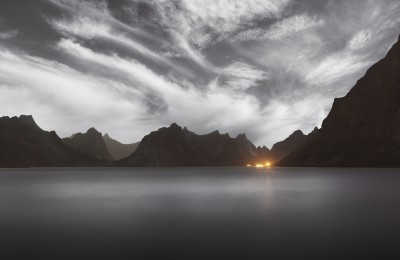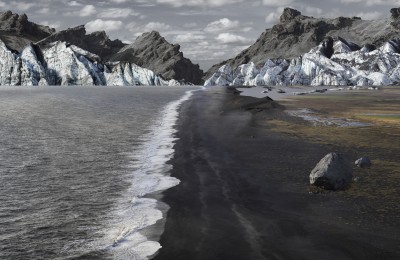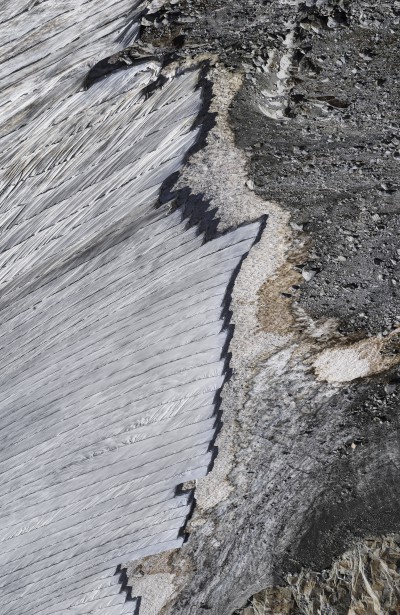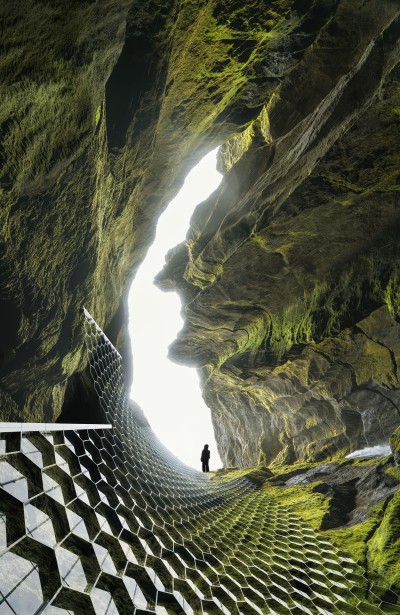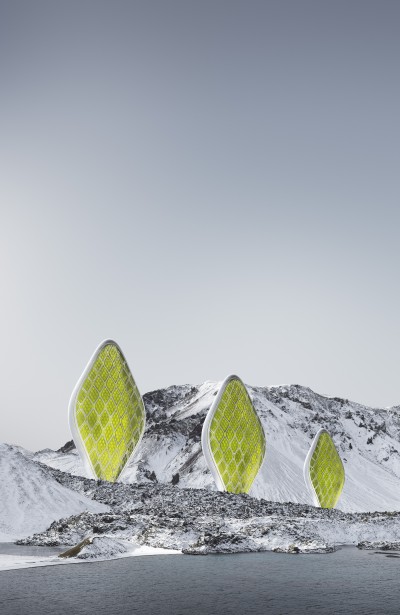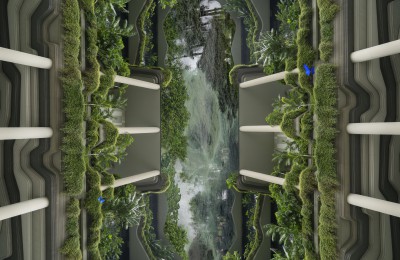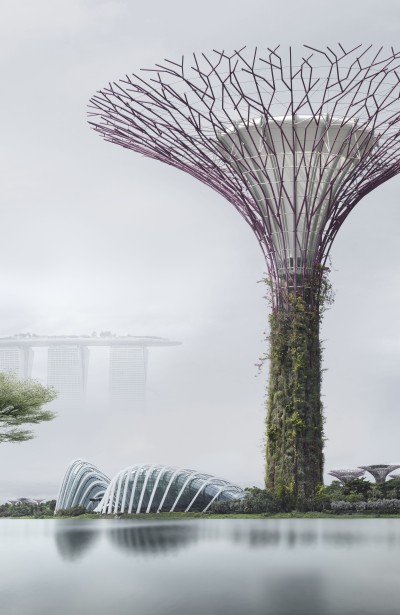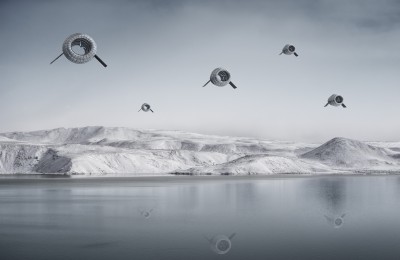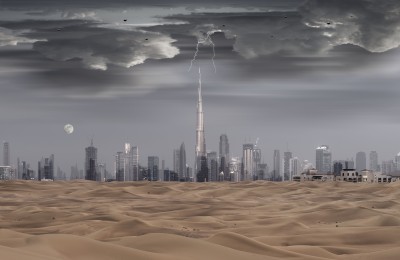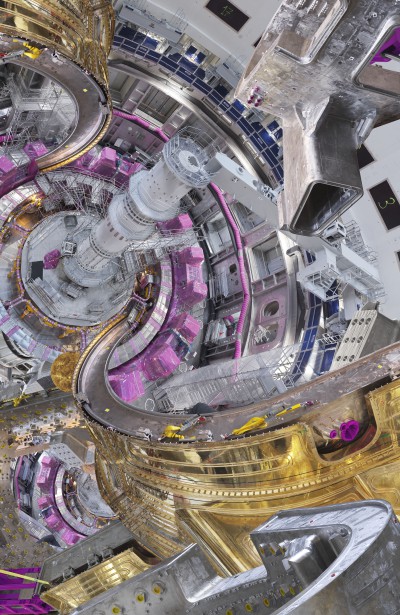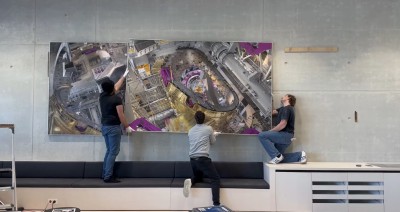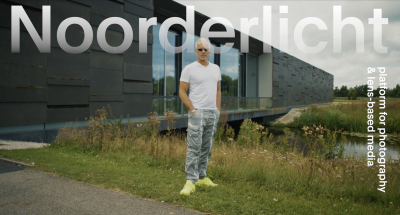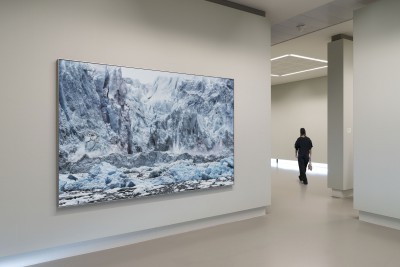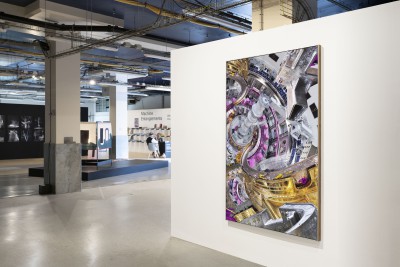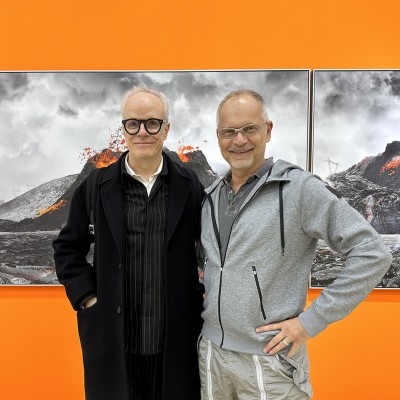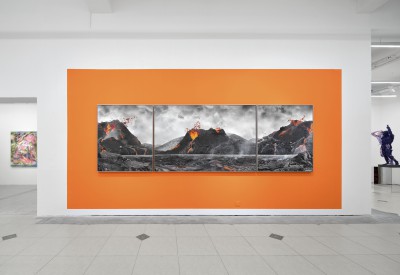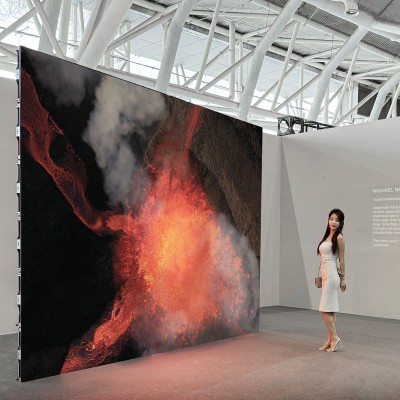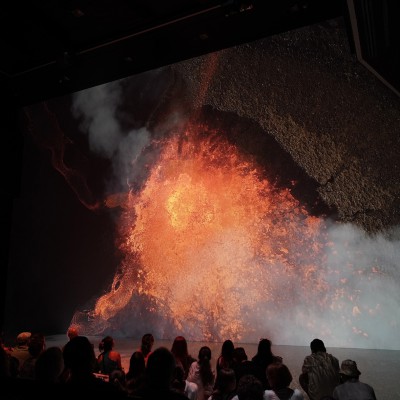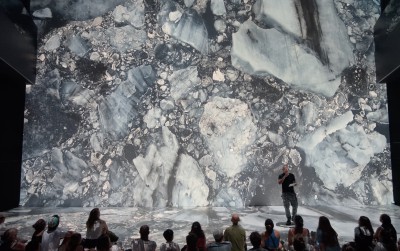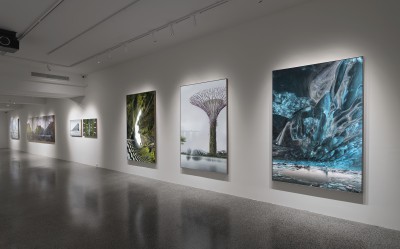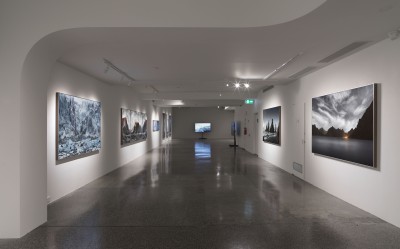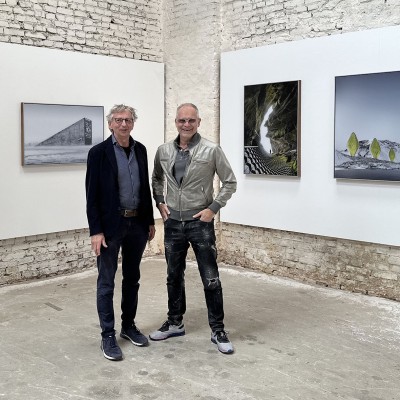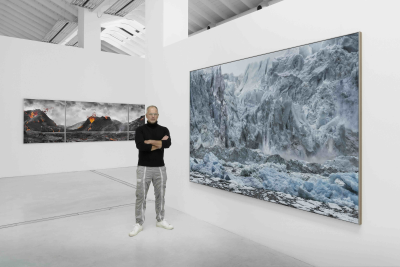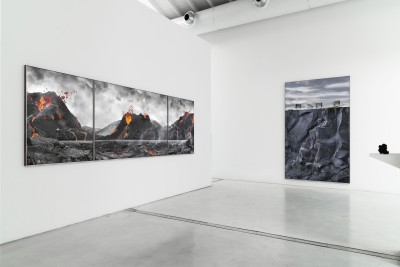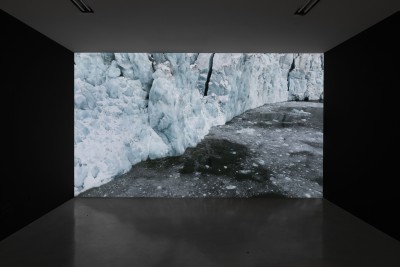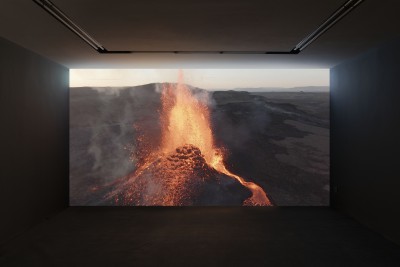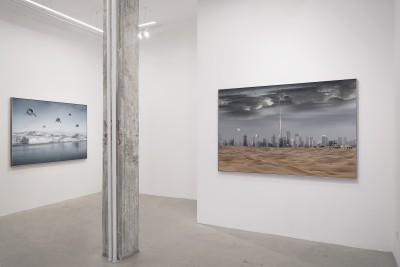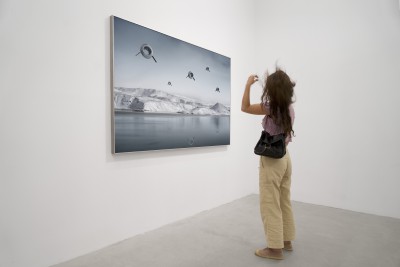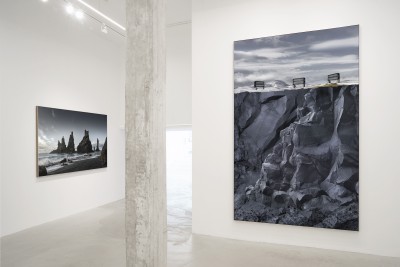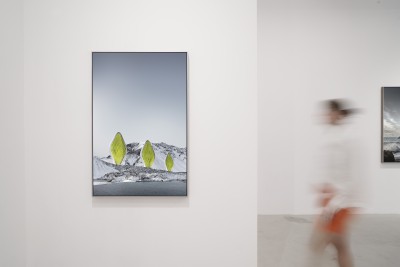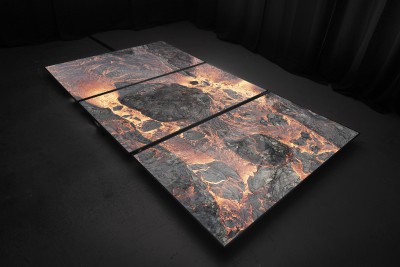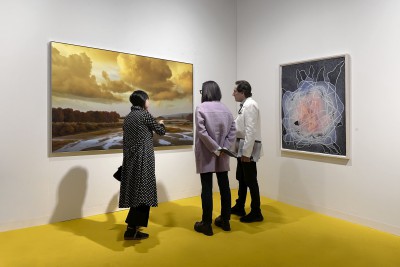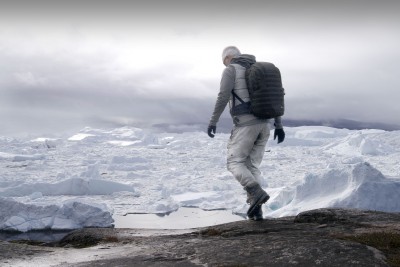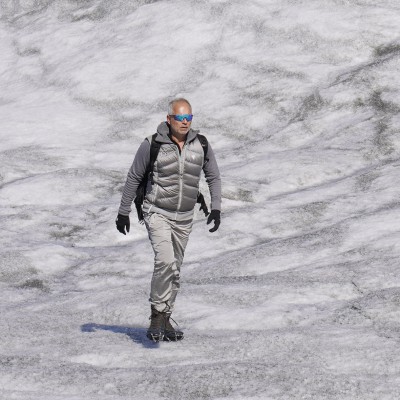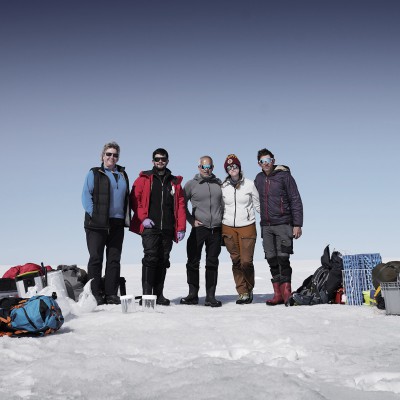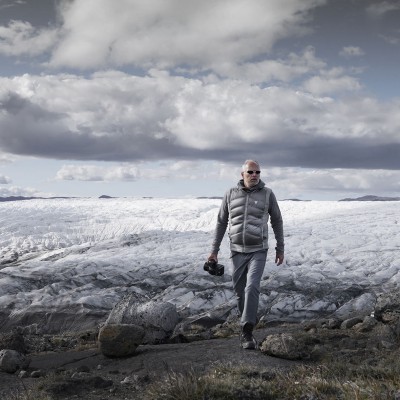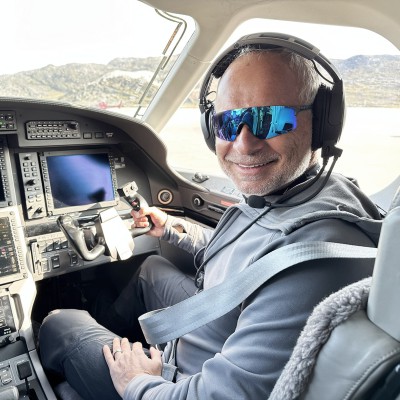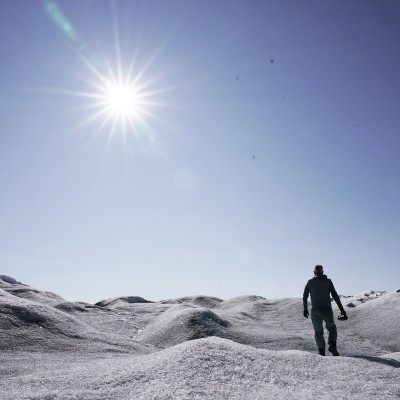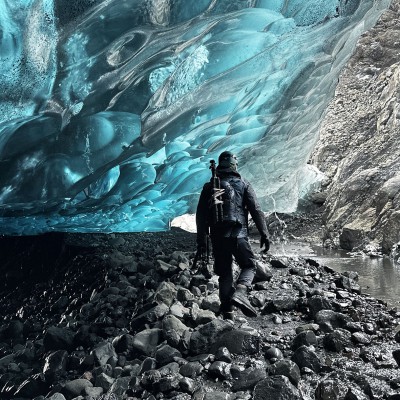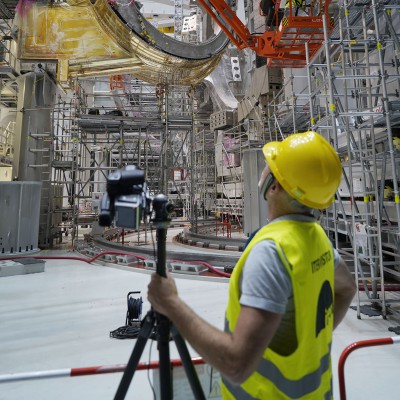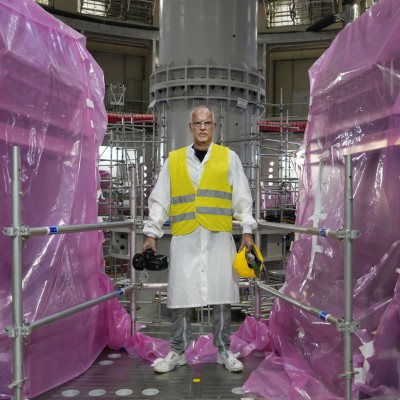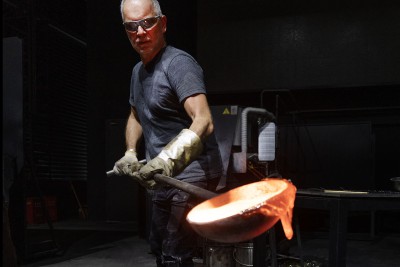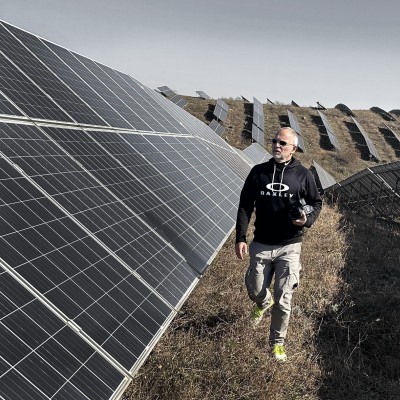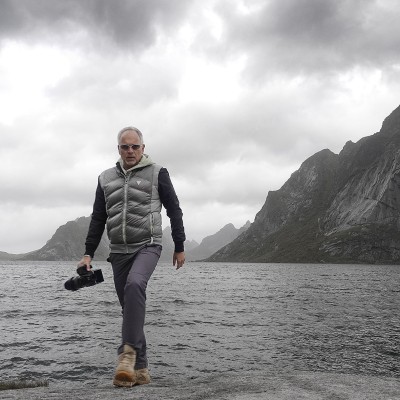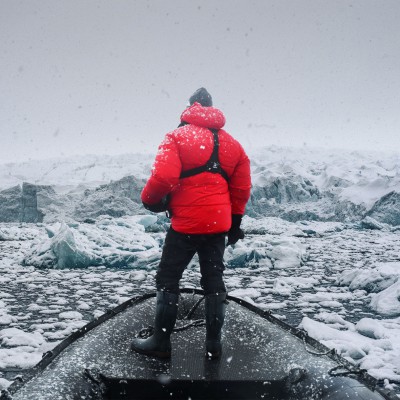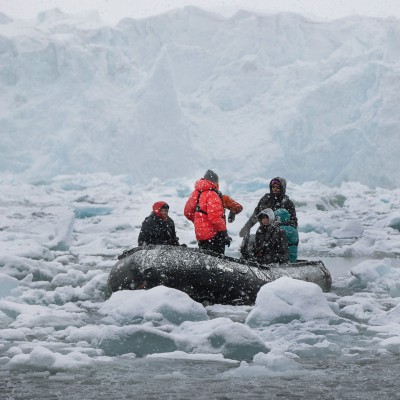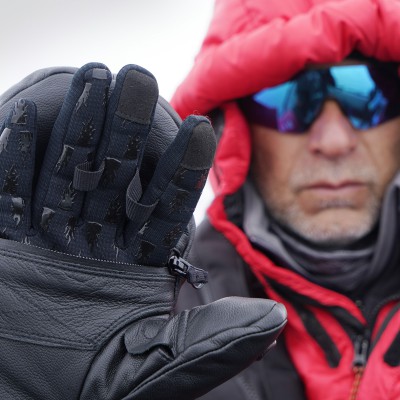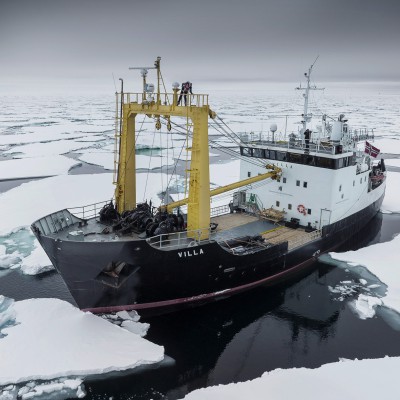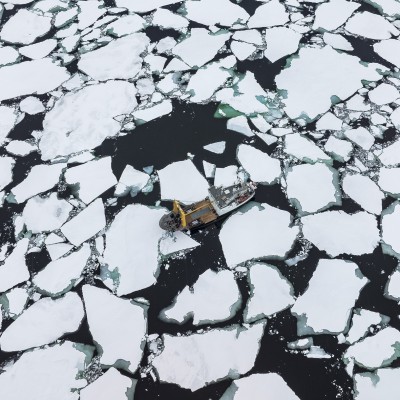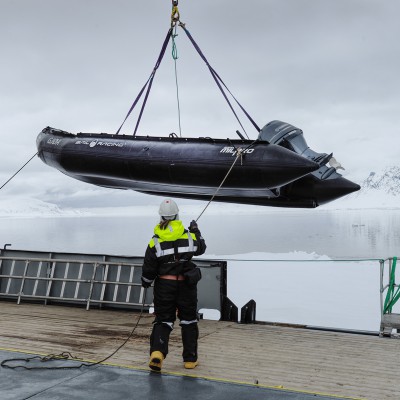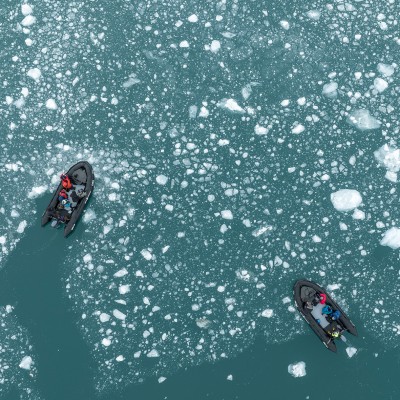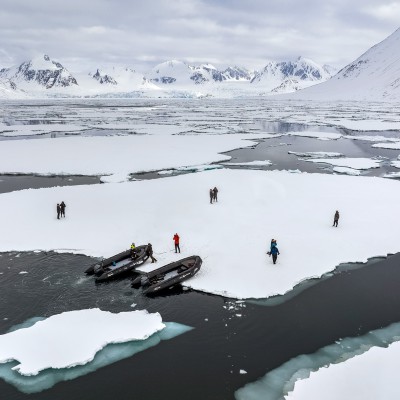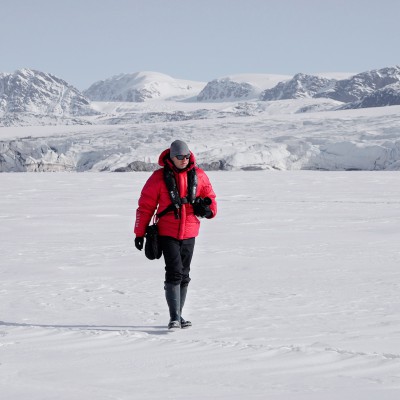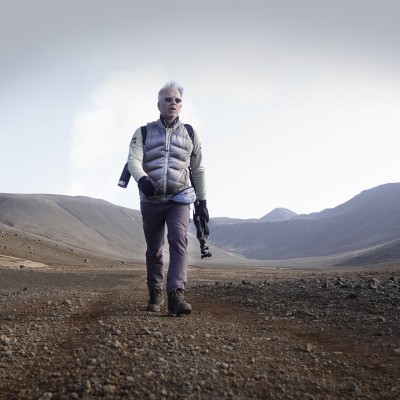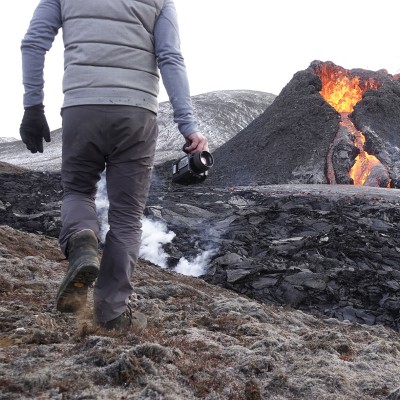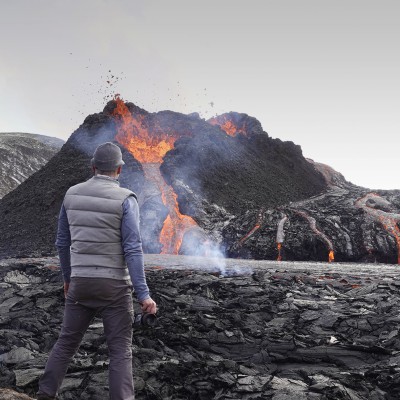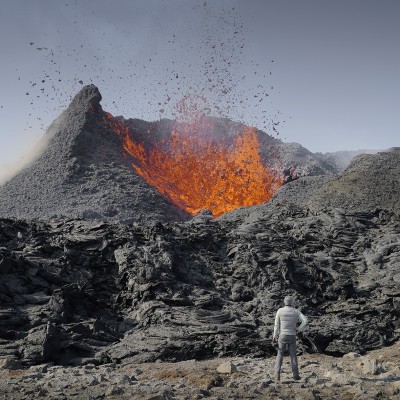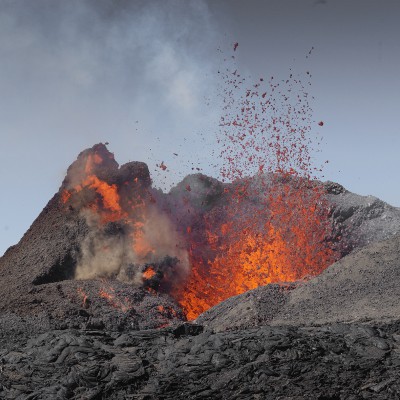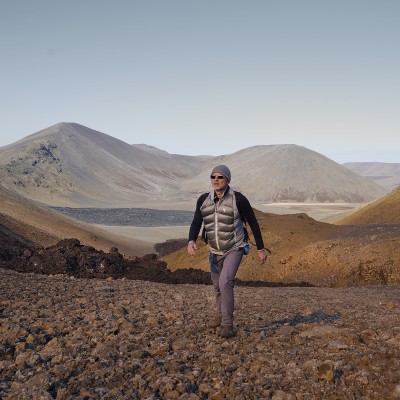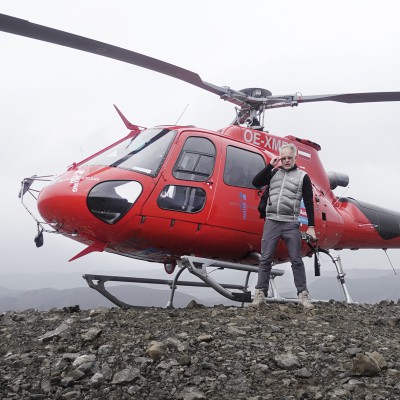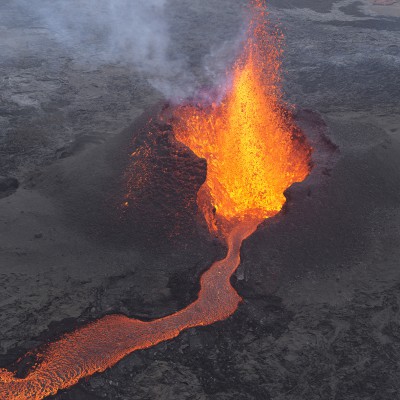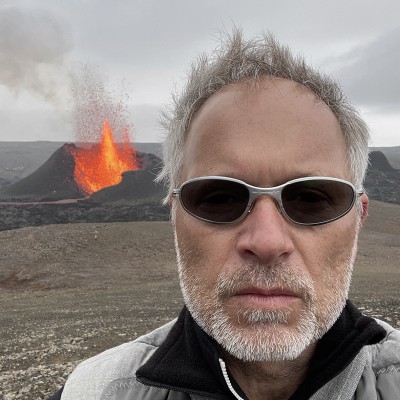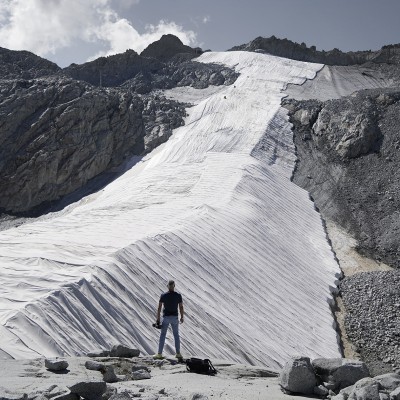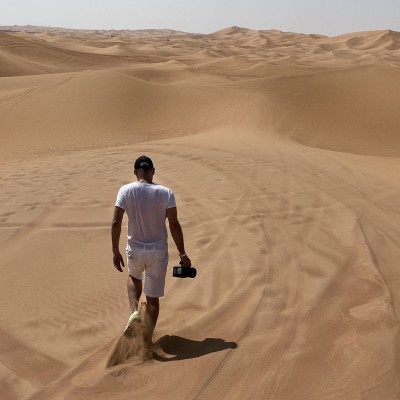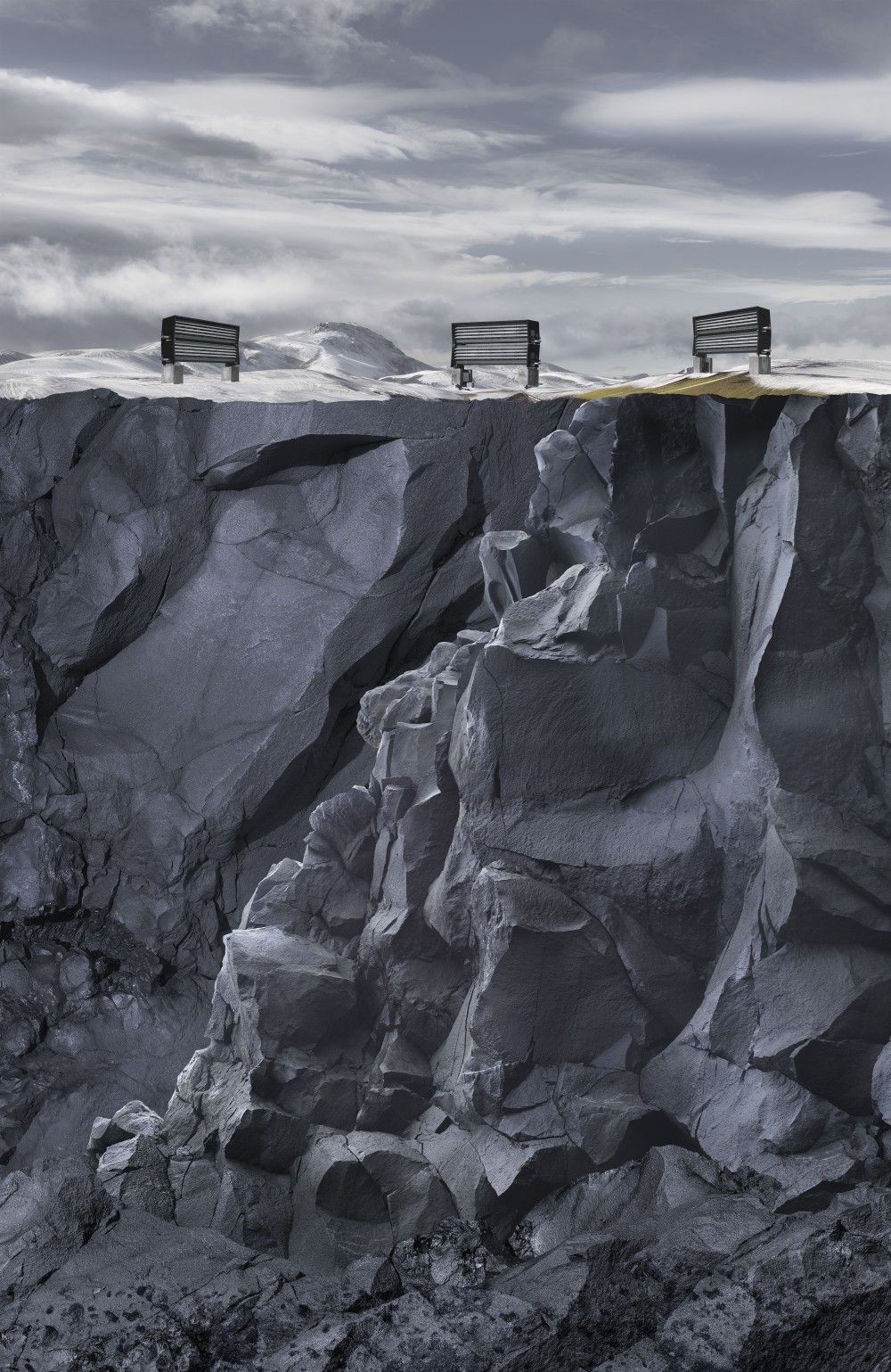
carbon capture
Format 1: 202 x 132 cm / 79.5 x 52 in, edition of 6 + 2 AP
Format 2: 102 x 67 cm / 40.2 x 26.3 in , edition of 6 + 2 AP
Hybrid photography, archival pigment print, aludibond, diasec, custom-made wood / aluminium frame
Climate change affects every region of the Earth in a variety of ways. The main cause for global warming is the rising concentration of carbon dioxide (CO2) in the atmosphere where it lingers for a very long time. Even if it were possible to reduce global emissions to zero by 2050, the carbon dioxide already emitted would stay in the atmosphere for over 100 years. The Intergovernmental Panel on Climate Change (IPCC) points out that the climate goals defined in the Paris Agreement will no longer be achievable without the active removal of CO2 already in the atmosphere. Direct Air Capture and Storage (DAC+S) plays a vital role here. In 2021, the Swiss company Climeworks started operations in the world’s largest facility for direct air capture and storage - removal of CO2 from the air and its subsequent storage in the ground in Iceland. Climeworks’ Icelandic partner Carbfix mixes the CO2 absorbed by the facility’s filter systems with water and then injects it into deep-lying layers of earth in the volcanic basalt rock. There, over time, it transforms itself into a carbonate mineral through a process of natural mineralisation; thus carbon dioxide is removed from the atmosphere for the long term. This process is still expensive and energy-intensive. However, by mid-century it could become a key technology in the fight against climate change.
The artwork “carbon capture” visualises the basic principle of this technology using the example of Climeworks‘ new Islandic DAC+S plant, which is expected to remove up to 4000 tonnes of carbon dioxide a year out of the ambient air and press it deep into the earth. The composition of the picture divides the landscape into an aboveground view and an underground one. In the upper third of the picture the viewer’s gaze is drawn to three futuristic-looking objects: CO2 collectors set in a landscape of mountains and snow while in the background clouds drift towards the filter systems. The image section below, which makes up the largest part of the picture, shows typically Icelandic, sharp-edged basalt formations. In a diagonal zigzag movement, the viewer’s gaze glides down the stone edges into the depths, revealing invisible underground landscapes. At the lower edge of the picture a mineralised stone structure is visible. An image of a drill core of carbonised carbon dioxide that was retrieved from a depth of 800 m is incorporated in the artwork. The Icelandic DAC+S plant could be a scalable and flexibly reproducible blueprint for the future expansion of these filter systems. This would depend, however, on the availability of sufficient renewable energy and geological storage options. In Iceland, and increasingly in other countries, the underground injection of greenhouse gases is considered an effective method to slow down global warming.
